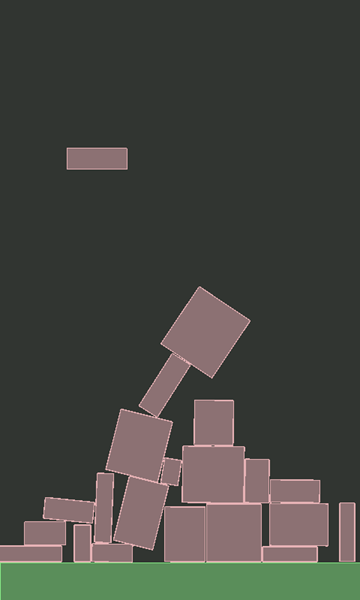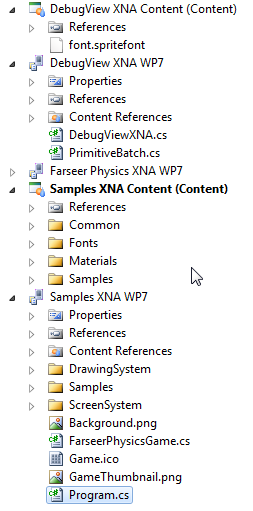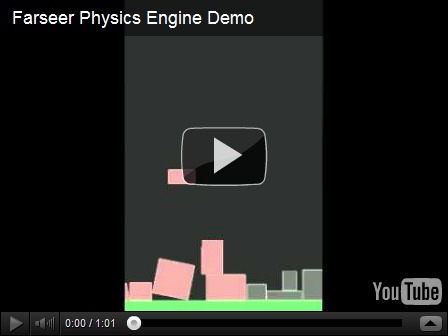Contents tagged with XNA
-
Farseer tutorial for the absolute beginners
This post is inspired (and somewhat a direct copy) of a couple of posts Emanuele Feronato wrote back in 2009 about Box2D (his tutorial was ActionScript 3 based for Box2D, this is C# XNA for the Farseer Physics Engine).
Here’s what we’re building:
What is Farseer
The Farseer Physics Engine is a collision detection system with realistic physics responses to help you easily create simple hobby games or complex simulation systems. Farseer was built as a .NET version of Box2D (based on the Box2D.XNA port of Box2D). While the constructs and syntax has changed over the years, the principles remain the same.
This tutorial will walk you through exactly what Emanuele create for Flash but we’ll be doing it using C#, XNA and the Windows Phone platform.
The first step is to download the library from its home on CodePlex. If you have NuGet installed, you can install the library itself using the NuGet package that but we’ll also be using some code from the Samples source that can only be obtained by downloading the library.
Once you download and unpacked the zip file into a folder and open the solution, this is what you will get:
The Samples XNA WP7 project (and content) have all the demos for Farseer. There’s a wealth of info here and great examples to look at to learn. The Farseer Physics XNA WP7 project contains the core libraries that do all the work. DebugView XNA contains an XNA-ready class to let you view debug data and information in the game draw loop (which you can copy into your project or build the source and reference the assembly).
The downloaded version has to be compiled as it’s only available in source format so you can do that now if you want (open the solution file and rebuild everything). If you’re using the NuGet package you can just install that. We only need the core library and we’ll be copying in some code from the samples later.
Your first Farseer experiment
Start Visual Studio and create a new project using the Windows Phone template can call it whatever you want.
It’s time to edit Game1.cs
Lines 4: Declare the debug view we’ll use for rendering (more on that later).
Lines 8: Declare _world variable of type class World. World is the main object to interact with the Farseer engine. It stores all the joints and bodies, and is responsible for stepping through the simulation.
Lines 12-17: Create the graphics device we’ll be rendering on. This is an XNA component and we’re just setting it to be the same size as the phone and toggling it to be full screen (no system tray).
Lines 34: We create a SpriteFont here by adding it to the project. It’s called “font” because that’s what the DebugView uses but you can name it whatever you want (and if you’re not using DebugView for your production app you might have several fonts).
Lines 37-44: We create the physics environment that Farseer uses to contain all the objects by specifying it here. We’re using Vector2.UnitY*10 to represent the gravity to be used in the environment. In other words, 10 units going in a downward motion.
Lines 46-56: We create the DebugViewXNA here. This is copied from the […] from the code you downloaded and provides the ability to render all entities onto the screen. In a production release you’ll be doing the rendering yourself of each object but we cheat a bit for the demo and let the DebugView do it for us. The other thing it can provide is to render out a panel of debugging information while the simulation is going on. This is useful in tracking down objects, figuring out how something works, or just keeping track of what’s in the engine.
Lines 49-67: Here we create a rigid body (Farseer only supports rigid bodies) to represent the floor that we’ll drop objects onto. We create it by using one of the Farseer factories and specifying the width and height. The ConvertUnits class is copied from the samples code as-is and lets us toggle between display units (pixels) and simulation units (usually metres). We’re creating a floor that’s 480 pixels wide and 50 pixels high (converting them to SimUnits for the engine to understand). We also position it near the bottom of the screen. Values are in metres and when specifying values they refer to the centre of the body object.
Lines 77-78: The game Update method fires 30 times a second, too fast to be creating objects this quickly. So we use a variable to track the elapsed seconds since the last update, accumulate that value, then create a new box to drop when 1 second has passed.
Lines 89-94: We create a box the same way we created our floor (coming up with a random width and height for the box).
Lines 96-101: We set the box to be Dynamic (rather than Static like the floor object) and position it somewhere along the top of the screen.
And now you created the world. Gravity does the rest and the boxes fall to the ground. Here’s the result:
Lines 105: We must update the world at every frame. We do this with the Step method which takes in the time interval. [more]
Lines 108-114: Body objects are added to the world but never automatically removed (because Farseer doesn’t know about the display world, it has no idea if an item is on the screen or not). Here we just loop through all the entities and anything that’s dropped off the screen (below the bottom) gets removed from the World. This keeps our entity count down (the simulation never has more than 30 or 40 objects in the world no matter how long you run it for). Too many entities and the app will grind to a halt.
Lines 125-130: Farseer knows nothing about the UI so that’s entirely up to you as to how to draw things. Farseer is just tracking the objects and moving them around using the physics engine and it’s rules. You’ll still use XNA to draw items (using the SpriteBatch.Draw method) so you can load up your usual textures and draw items and pirates and dancing zombies all over the screen. Instead in this demo we’re going to cheat a little. In the sample code for Farseer you can download there’s a project called DebugView XNA. This project contains the DebugViewXNA class which just handles iterating through all the bodies in the world and drawing the shapes. So we call the RenderDebugData method here of that class to draw everything correctly. In the case of this demo, we just want to draw Shapes so take a look at the source code for the DebugViewXNA class as to how it extracts all the vertices for the shapes created (in this case simple boxes) and draws them. You’ll learn a *lot* about how Farseer works just by looking at this class.
That’s it, that’s all. Simple huh?
Hope you enjoy the code and library. Physics is hard and requires some math skills to really grok. The Farseer Physics Engine makes it pretty easy to get up and running and start building games. In future posts we’ll get more in-depth with things you can do with the engine so this is just the beginning.
I've posted the entire source code for this article on Bitbucket so you can grab the whole package here.
Enjoy!
-
Coffee, Code, or Me?
The gauntlet has been thrown down. It's duelling laptops as John Bristowe and I square off at the Kawa Expresso Bar in Calgary this Friday and bring you the Cowtown version of Coffee and Code (with a little Ultimate Fighter Championship thrown in for good measure).
Last month Joey “Accordion Guy” deVilla, a Microsoft Canada Developer Evangelist, realized his vision. It’s called Coffee and Code and basically you sit around a coffee shop, outfitted with computers and a wireless connection, and work all day. Yeah, that’s right. Work all day in a coffee shop always connected to the big series of tubes, never having to serve an double chai latte mocha half fat with whipped cream to anyone.
My good buddy John Bristowe is hosting the first Calgary Coffee and Code at the Kawa Expresso Bar on Friday, March 13. He’ll spend the day lounging around while James Kovacs and I actually provide the code. I’m sure John has some purpose. Maybe we’ll get him to show off his Barista skills or drag and drop some demo for onlookers. In any case it’s going to be blast. John will be there most of the day (9AM to 4PM) and I’ll hang out for as much as I can bear. I’m bringing a few goodies to help answer any questions and perform geek tricks including one of my virtual SharePoint rigs, my XNA development setup (sorry, no XBox), and my Facebook development in case anyone wants to look at icky PHP code.
Basically come on down, hang out, have some coffee, bring your laptops and chat it up. James has promised to be the ALT.NET guy (although I’ll be there as his understudy in case he breaks another wrist) and John, well, John will have pretty PowerPoint slides to show you about Windows 7 and other mythical products from Microsoft.
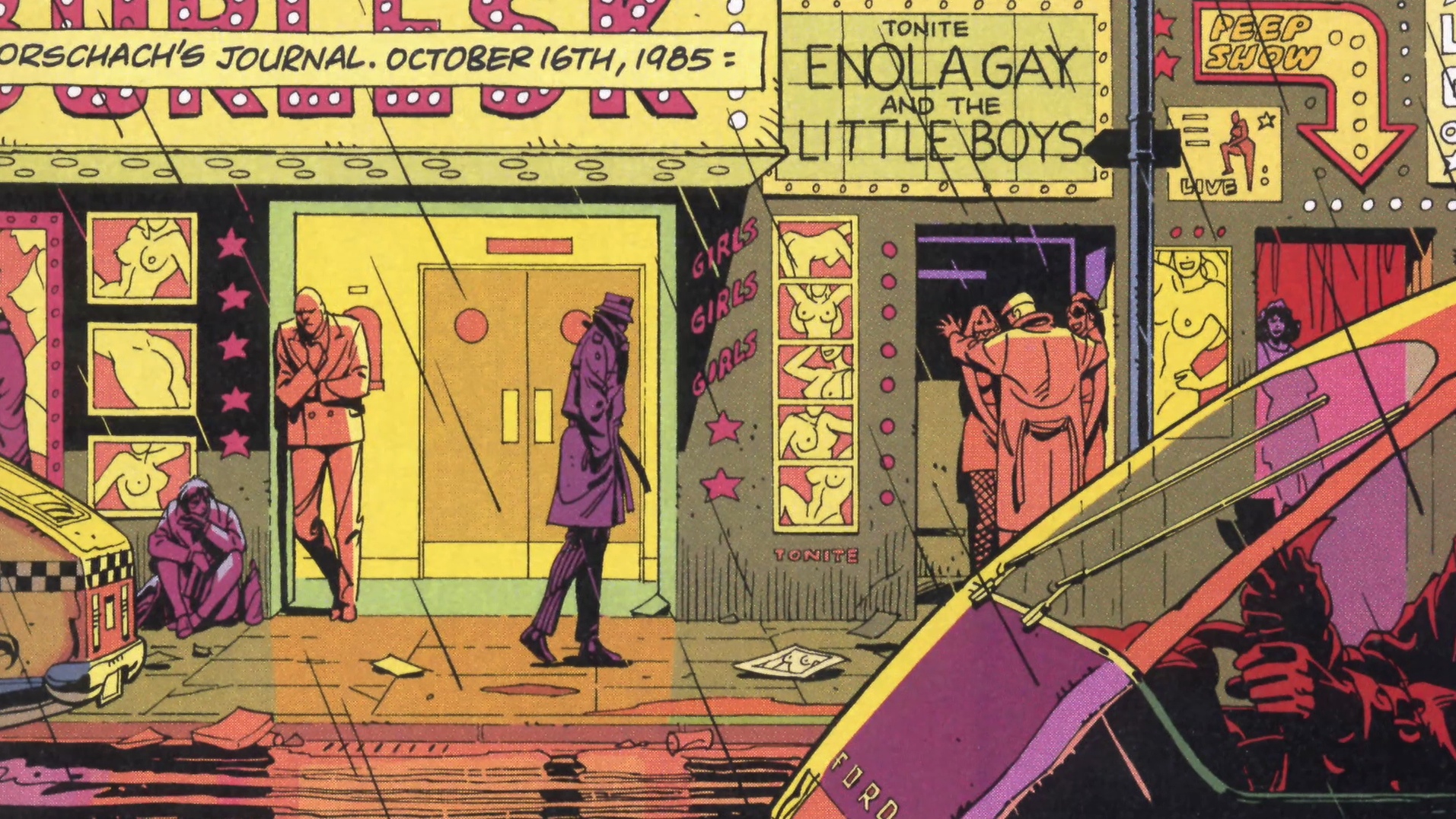
Also, be sure to get there early to see our Interpretive Dance version of “Watchmen, The Live Motion Comic”. John will be playing The Night Owl, James will take on Rorschach, and I’ll be doing all the other roles.
Check out this link for a map to the Expresso Bar and see you there!
-
Game Studio 2.0, Visual Studio 2005, VisualSVN, and me
If you're like me and dabble in everything, then you might have Visual Studio 2005 installed along with VisualSVN (a plug-in to integrate Subversion source control access with Visual Studio). The latest version of XNA Game Studio (2.0) now allows you to build XNA projects inside of any flavor of Visual Studio. Previously you could only use C# Express Edition, which meant you couldn't use any add-ins (the license for C# Express forbids 3rd party addons) which meant I couldn't use ReSharper. Anyone who's watched my XNA demos knows this peeves me to no end as I stumble pressing Alt+Enter to try to resolve namespaces or Ctrl+N to find some class.
Oh yeah, getting back to the point. If you've installed the latest Game Studio 2.0 you can now use it with Visual Studio 2005 (not 2008 yet). And if you've got the combo I mentioned installed (VS2005, GS2.0, and VisualSVN) you might see this when you create a new XNA project:
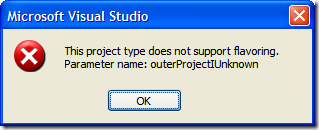
It's a crazy bug but I tracked it down via the XNA forums. Apparently there's a conflict if you're running the combination I mentioned. Don't ask me why a source control plugin would affect a project creation template. I just use this stuff.
Anyways, you can fix it with the latest version of VisualSVN (1.3.2). I was running 1.3.1 and having the problem, you may be in the same boat. Here's the conversation on the problem in the XNA forums; here's the bug listed on the connect site; and here's the link to VisualSVN 1.3.2 to correct the problem. All is well in developer land again as we enter the world of ReSharper goodness sprinkled with a topping of XNA.
Happy gaming!
-
Another Kick at the Can
 Look like a new development community is forming, this time around XNA and Game Development. GameDevKicks.com uses the DotNetKicks code and has launched a new site for game development content. There's only 5 articles submitted, but looks like it's off to a good start. A good set of categories to start, a bit of a redesign from the typical DotNetKicks look and feel (something like a cross between Digg and DNK) but it's just starting off.
Look like a new development community is forming, this time around XNA and Game Development. GameDevKicks.com uses the DotNetKicks code and has launched a new site for game development content. There's only 5 articles submitted, but looks like it's off to a good start. A good set of categories to start, a bit of a redesign from the typical DotNetKicks look and feel (something like a cross between Digg and DNK) but it's just starting off. So if you're into the game development scene feel free to help out and see if this kicks community can grow and prosper. Check out GameDevKicks here and give a whirl.
More game development news to come shortly from your friendly neighborhood SharePoint-Man.
-
DevTeach Day 2 - XNA with Live!
Sitting for the first session as we're going through the XNA session with Pat McGee. The session was an intro to XNA (and filled with a room full of guys who haven't done any XNA work so it was a good audience) but was fun with the people involved.
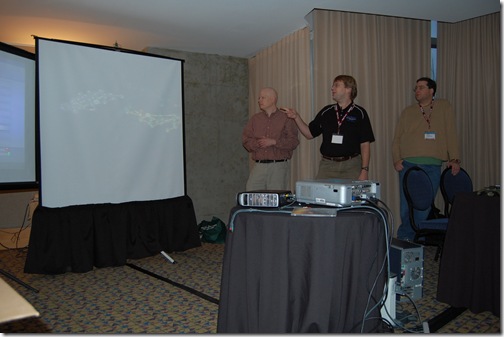
XNA on Xbox requires you to be connected to XBox Live and the Xbox networking was down so the guys couldn't demo anything on the XBox. However the fallback plan was to demo some networking on the laptops they had (of course when you come for an XNA demo you bring extra laptops and Xboxes, it's all about the hardware). Luckily it was John "The Pimp" Bristowe who saved the day and got the Xbox hooked up to the network so the demos were good to go.
